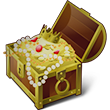


Rough Notes:
 |
Print this Page | ||||||||||||||||||||||||
|
|
|||||||||||||||||||||||||

|
|||||||||||||||||||||||||
| Constitution |
Introduction |
||||||||||||||||||||||||
|
|
|
|
||||||||||||||||||||||
|
|||||||||||||||||||||||||
Where Ancient History, Ancient Religion, and Comparative Mythology meet Cosmology creating Imagery, and Traditions we see and use all around us still today.



Rough Notes:
 |
Print this Page | ||||||||||||||||||||||||
|
|
|||||||||||||||||||||||||

|
|||||||||||||||||||||||||
| Constitution |
Introduction |
||||||||||||||||||||||||
|
|
|
|
||||||||||||||||||||||
|
|||||||||||||||||||||||||